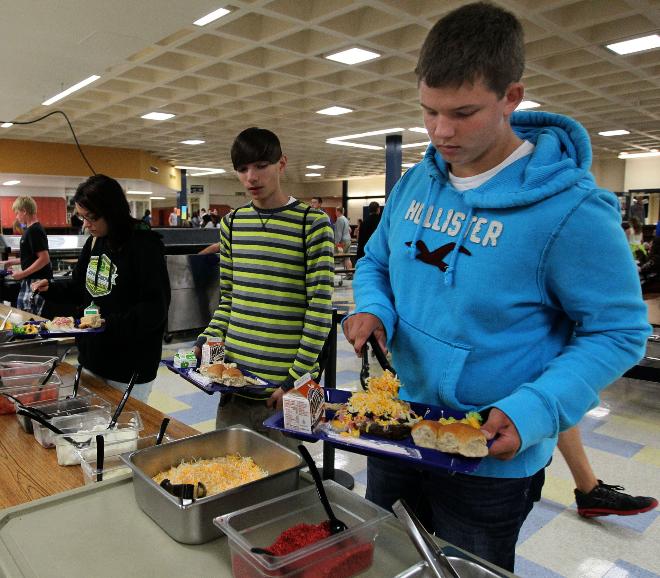
By 7 a.m. Monday, senior Nick Blohm already had burned about 250 calories in the Mukwonago High School weight room.
He grabbed a bagel and a Gatorade afterward; if he eats before lifting, he gets sick.
That was followed by eight periods in the classroom, and then three hours of football practice. By the time he headed home, he had burned upward of 3,000 calories – his coach thinks the number is even higher.
But the calorie cap for his school lunch? 850 calories.
“A lot of us are starting to get hungry even before the practice begins,” Blohm said. “Our metabolisms are all sped up.”
Following new federal guidelines, school districts nationwide have retooled their menus to meet new requirements to serve more whole grains, only low-fat or nonfat milk, daily helpings of both fruits and vegetables, and fewer sugary and salty items. And for the first time, federal funds for school lunches mandate age-aligned calorie maximums. The adjustments are part of the Healthy, Hunger-Free Kids Act of 2010 touted by Michelle Obama and use the updated Dietary Guidelines for Americans from the U.S. Department of Agriculture.
